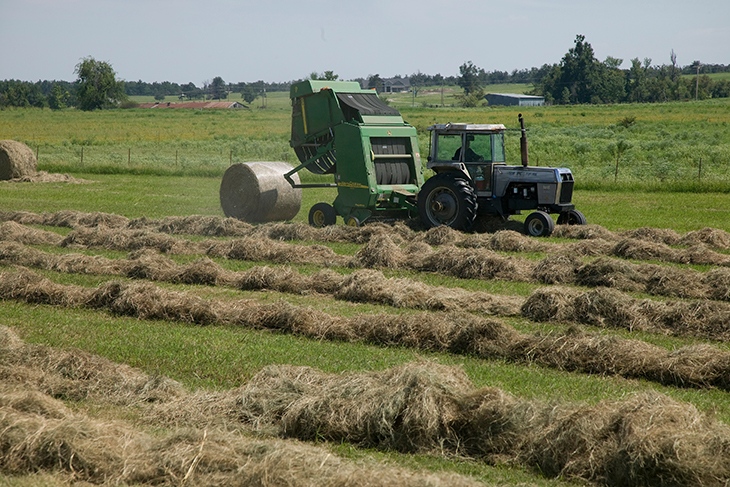
Climatic conditions make assessing Oklahoma forage conditions difficult
Wednesday, August 22, 2018
Author Charles Dickens summed things up nicely: It was the best of times, it was the worst of times; and one might add “it was the strangest of times” when speaking about recent climatic conditions in Oklahoma.
According to the Oklahoma Mesonet, every climate region of the state has received above-average rainfall the past 30 days, ranging from 139 percent of normal in the Panhandle to 268 percent of normal in the Southeast. However, the latest Drought Monitor as of this writing shows 70 percent of Oklahoma with abnormally dry conditions or worse, including 26 percent in severe drought or worse.
“Waves of wet, dry, warm and cool weather have made it difficult to assess forage conditions across the state, with a very cool and wet August just the latest turn in a rather unusual year,” said Derrell Peel, Oklahoma State University Cooperative Extension livestock marketing specialist.
The latest U.S. Crop Progress Report shows average pasture and range conditions at 30 percent poor to very poor, up from 22 percent one year ago. In Oklahoma, 23 percent of pastures are currently rated poor to very poor, compared to 7 percent this time last year. Regional pasture conditions have higher percentages of poor to very poor conditions in the West, Southern Plains, Corn Belt, Northeast and Southeast.
“Only the Great Plains region of Kansas, Colorado, Nebraska, South and North Dakota, Montana and Wyoming has a smaller percentage of poor and very poor pasture conditions this year,” Peel said. “The Drought Monitor shows that 20.02 percent of the United States is currently in severe drought or worse, D2 to D4. This compares to 5.33 percent at this time last year.”
Peel added the hay situation is perhaps even more difficult to assess this year. The 2018 hay crop year started with U.S. total May 1 hay stocks down 36 percent year over year, and at the lowest level since 2013. Variable summer weather conditions have affected both the quantity and quality of hay production.
The latest Livestock Marketing Information Center projections suggest a slight overall increase in hay production of 0.5 percent year over year, with increased alfalfa hay production more than offsetting decreases in other hay production. However, the lower beginning stocks mean that overall hay supplies will be tighter and higher prices are expected for all types of hay.
“Anecdotal indications are that forage and hay production is variable but probably lower for much of Oklahoma,” Peel said. “The start-and-stop nature of forage growth this season has contributed to nitrate toxicity in sorghum forages and johnsongrass, with several cattle deaths reported. Producers must continue to monitor and manage grazing and hay production to minimize quality and toxicity problems.”
Still, August moisture may provide an opportunity to boost forage supplies for fall and winter.
“Current conditions may facilitate some late season hay production or, better yet for some producers, an opportunity to stockpile pasture for fall and winter,” Peel said. “Conditions are looking more favorable for wheat and other cool-season cereal forage production this fall.”
The Oklahoma Cooperative Extension Service is one of two state agencies administered by OSU’s Division of Agricultural Sciences and Natural Resources, and is a key part of the university’s state and federally mandated teaching, research and Extension land-grant mission.
